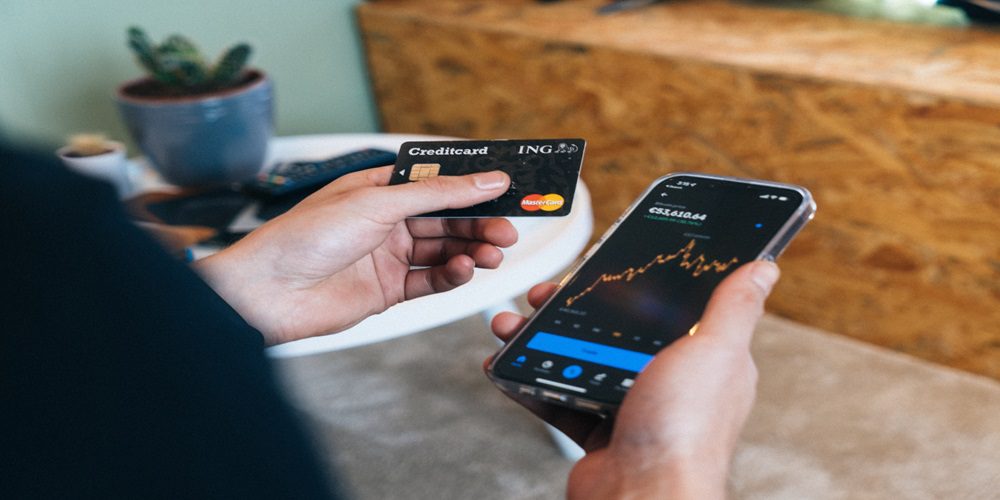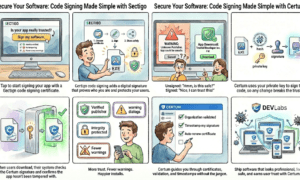Are you ready to uncover the ultimate secrets to fortify your credit card fortress? In this increasingly digital age, our personal financial information is at constant risk. Hackers, scammers, and fraudsters are lurking around every virtual corner, waiting for the perfect opportunity to swipe our hard-earned cash. But fear not! We’ve got you covered with essential tips that will make safeguarding your credit card information as effortless as a breeze. Stay safe, stay secure – because protecting what’s rightfully yours has never been more crucial!
The Importance of Protecting Your Credit Card Information
In today’s society, it is more important than ever to protect your credit card information. With the rise of technology and online shopping, it has become easier for hackers and scammers to access personal and financial information. This makes it crucial for individuals to take necessary precautions in safeguarding their credit card details.
One of the most important reasons why you should protect your credit card information is to prevent identity theft. Identity theft occurs when someone gains access to your personal information, such as your name, address, social security number, and credit card details. This can result in fraudulent charges on your account or even opening new accounts in your name without your permission. It can be a lengthy and stressful process to recover from identity theft, so it is essential to take preventive measures.
Another reason to protect your credit card information is to avoid unauthorized charges on your account. If a hacker gains access to your credit card details, they can use them to make purchases or withdraw cash without you even knowing until you check your statement or receive a notification from the bank. Not only will this result in financial loss, but it can also damage your credit score and history.
Common Methods Used to Steal Credit Card Information
Credit card fraud is a growing concern for consumers, with technology constantly advancing and criminals becoming more sophisticated in their methods. The Federal Trade Commission reported that there were over 4 million cases of credit card fraud in the United States in 2019 alone. As a consumer, it is important to understand the common methods used by thieves to steal credit card information so you can take necessary precautions to protect your financial security.
Here are some of the most common methods used to steal credit card information:
1. Skimming: This method involves using a small device that reads and captures data from the magnetic strip on your credit or debit card when you make a transaction. Thieves may place these skimmers on ATMs, gas pumps, or other payment terminals, making it easy for them to obtain your personal and financial information.
2. Phishing: This type of fraud occurs when a thief sends out fraudulent emails pretending to be from legitimate organizations such as banks or credit card companies. These emails often contain links that take you to fake websites where they try to trick you into providing your login credentials or other sensitive information.
3. Hacking: Cybercriminals use various techniques such as malware, viruses, and ransomware attacks to gain access to sensitive information stored on computers or mobile devices. Once they have access, they can easily steal credit card numbers and other personal data.
4. Shoulder Surfing: One of the easiest ways for thieves to get hold of your credit card information is by simply watching over your shoulder when you make a purchase or input your PIN at an ATM. They may also stand too close to you in crowded places and use their smartphones to take pictures or record videos of your credit card.
5. Physical Theft: Thieves may steal your wallet, purse, or credit cards directly from you, especially in crowded areas such as shopping malls, airports, or public transportation. They can then use the stolen cards to make purchases before you even realize they are missing.
6. Malware on Public Computers: Public computers, such as those found in libraries and internet cafes, are often unsecured and can be infected with malware without the user’s knowledge. If you use these computers to make online purchases or access your financial accounts, thieves can easily intercept your data.
7. Interception of Mail and Packages: Credit card thieves may also steal mail from your mailbox or packages left outside your home. They are looking for new credit cards sent by banks as well as statements that contain valuable personal information.
Tips for Keeping Your Credit Card Safe Online
In today’s digital age, credit cards have become an essential part of our daily lives. With the convenience of online shopping and bill payments, it is easy to see why many people choose to use their credit cards for most transactions. However, with this rise in online activity comes the risk of credit card fraud and identity theft. To ensure that your credit card information stays safe and secure while using it online, here are some important tips to keep in mind:
1. Use a strong password: The first step towards keeping your credit card safe online is by using a strong and unique password for all your financial accounts. Avoid using simple or easily guessable passwords such as your name, birthdate, or 1234. Instead, opt for a combination of letters (upper and lower case), numbers, and special characters.
2. Be cautious on public Wi-Fi: Public Wi-Fi networks can be convenient but also pose a danger when it comes to protecting sensitive information like credit card details. These networks are often unsecured, making it easier for cybercriminals to intercept data transmission and access personal information. So avoid making any sensitive transactions while connected to public Wi-Fi.
3. Look out for secure websites: When making an online purchase or entering your credit card details on a website, always check if the site has a valid SSL certificate by looking at the URL bar for “https://”. This indicates that the site is secure and encrypts any data you enter.
How to Protect Your Credit Card While Shopping in Stores
Credit card fraud is a growing concern for many individuals, especially when shopping in stores. With the increasing use of technology and online shopping, it has become easier for hackers and scammers to access and steal credit card information. As a consumer, it is important to take precautions to protect your credit card while shopping in stores. Here are some essential tips:
1. Keep an Eye on Your Card at All Times: One of the easiest ways for someone to steal your credit card information is by physically stealing your card while you’re distracted. When making a purchase or entering your PIN number at the checkout counter, make sure to cover the keypad with your hand so that no one can see what numbers you are typing. Also, never let your credit card out of sight when paying for your purchase.
2. Use Secure Payment Methods: Whenever possible, use secure and trusted payment methods such as chip-enabled cards or contactless payment options like Apple Pay or Google Wallet. These methods provide an extra layer of security compared to traditional swipe cards as they generate unique codes for each transaction, making it harder for hackers to retrieve sensitive information.
3. Be Wary of Suspicious Devices: Skimming devices are small electronic gadgets that thieves install on ATM machines and point-of-sale terminals to steal credit card information. Before using any device to make a payment, look around closely for any suspicious-looking devices attached or loose parts that may have been tampered with.
What To Do If Your Credit Card Is Compromised
If you suspect that your credit card has been compromised, it is important to act quickly in order to minimize the potential damage. Here are the steps you should take if you believe your credit card information has been compromised:
1. Check Your Account Activity: The first thing you should do is log into your online account or check your latest statement to review all recent transactions. Look for any suspicious charges or withdrawals that you do not recognize.
2. Contact Your Credit Card Company: If you find any unauthorized activity on your credit card, contact your credit card company immediately and inform them of the situation. They will be able to assist you with cancelling the compromised card and issuing a new one as well as reversing any fraudulent charges.
3. Freeze Your Account: In addition to contacting your credit card company, it is recommended to freeze your account until the issue can be resolved. This will prevent any further unauthorized transactions from taking place while you work with your bank to resolve the issue.
4. Change Your Passwords/PINs: If there is a chance that someone gained access to sensitive login information associated with your credit card, such as passwords or PINs, it is important to change them immediately. Use strong, unique passwords and avoid using easily guessable information like birthdates or names.
5. Monitor Your Credit Report: It is always a good idea to regularly monitor your credit report for any unusual activity, but this becomes even more important after a potential compromise of your credit card information.
Additional Measures to Keep Your Financial Information Secure
In addition to the basic safety precautions mentioned in the previous section, there are additional measures that you can take to ensure the security of your financial information and protect yourself from credit card fraud. These may require a bit more effort on your part, but they are worth it for the peace of mind and added protection they offer.
1. Regularly check your credit report: It is important to regularly monitor your credit report to catch any suspicious activity as early as possible. You can request a free copy of your credit report every year from each of the three major credit reporting agencies – Equifax, Experian, and TransUnion. Carefully review the report for any unauthorized accounts or transactions and report them immediately.
2. Enable two-factor authentication: Many online banking and financial services offer two-factor authentication as an extra layer of security. This means that in addition to entering your password, you will also need to enter a code sent to your phone or email before accessing your account. This makes it much harder for hackers to gain access even if they have gotten hold of your login credentials.
3. Use secure websites: When making online purchases or accessing sensitive financial information, always make sure that the website is secure with HTTPS encryption. You can check this by looking at the URL – if it starts with “https” instead of just “http”, it means that any data exchanged between you and the website is encrypted, making it much harder for anyone else to intercept it.
Conclusion
Your credit card information is a valuable asset that needs to be protected at all times. By following these essential tips, you can ensure that your personal and financial information stays safe and secure. Remember, it only takes one careless mistake for someone to steal your credit card details and wreak havoc on your finances. Stay vigilant, stay cautious, and always prioritize the security of your credit card information. With these precautions in place, you can use your credit cards with confidence knowing that they are well-protected from potential threats.



































